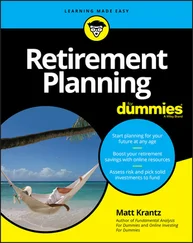But the company’s cost cutting didn’t extend to stock awards for highly paid managers and executives: It paid a few thousand of them more than $450 million in stock awards that year, an increase of almost 10 percent over the year before. “The Compensation Committee believes that the retirement, deferred-compensation and/or savings plans offered at UPS are important for the long-term economic well-being of our employees, and are important elements of attracting and retaining the key talent necessary to compete,” noted the March 2009 proxy.
UPS is part of a broader trend that hasn’t been highlighted in annual reports, analyst surveys, or benefits consultants’ reports to the media: Even as they limit or suspend contributions to 401(k)s, employers have been awarding a growing amount of stock compensation to their upper ranks. This isn’t just stock options, whose ultimate value can be a crapshoot. Most of this is in the form of restricted shares, which have an actual, defined cash value to the recipient.
Comcast’s expense for stock awards and options was $208 million in 2008, up 27 percent from the year before. The expense for the 401(k) plan: $178 million.
Honeywell employees also took a one-two blow to their 401(k)s. The 178,000 employees in the “Savings and Ownership Plan” (a KSOP) lost 29 percent of their savings. Senior managers at the engineering-and-aerospace conglomerate, however, enjoyed guaranteed returns ranging from 6.3 percent to 10 percent. The next year, in 2009, Honeywell cut its 401(k) match in half and said it wouldn’t increase it “until there is greater certainty in the economy.” By 2010, the expense for the 401(k) plans had fallen to $105 million from $220 million in 2008. Stock compensation expense, meanwhile, grew 28 percent over the same period, to $164 million.
Regardless of whether companies are suspending contributions, dozens are spending more on stock awards than they are for 401(k)s: Kraft Foods, State Street Bank, Dell, Marriott, and International Paper, just to name a few.
The trend hasn’t been studied, but it might be worth a look. Employer contributions to 401(k) plans and awards of restricted stock have a lot in common. Both are forms of deferred compensation—i.e., pay for services rendered today that employees don’t receive until later. Both are subject to vesting rules, meaning that employees and executives can forfeit the company contributions if they don’t stay long enough to lock them in. Employees don’t pay income taxes on contributions to 401(k)s until they withdraw the money, nor do they owe income taxes on restricted shares until they cash them in.
The chief difference, as we’ve seen, is that savings plans for employees don’t create a liability; deferred comp and restricted shares do. So, as companies shift more of their retirement resources from employees to executives, they’re also adding to their retirement obligations.
The architects of today’s retirement mess—consultants and financial firms—have also played a non-starring role in the public pension debacle. The difference was that, while they helped private employers hide pension cuts and exaggerate their pension woes, they also helped public employers quietly boost benefits and hide the growing liabilities.
They not only helped private companies drain assets from pension plans, but also helped public employers avoid contributing in the first place, enabling legislators and politicians to conjure up cash for popular projects, without raising taxes, and look like community heroes.
And while they were helping private employers to load their retirement plans with stock, some consultants and financial firms duped many public pension managers into investing in complex and risky derivatives whose value later exploded, just like the subprime loans with low teaser rates that predatory lenders conned millions of homeowners into.
In the private sector, current and future retirees are bearing the brunt of the retirement heist; in the public sector, the carnage is being borne by the employees and by the communities around them.
The scapegoat game continues. Corporate employers are still blaming aging workers, retiree “legacy costs,” and “spiraling” retiree health care costs for their financial woes—not their own actions that squandered billions of dollars in pension assets, their thinly masked desire to convert benefits earned by and promised to retirees into profits for executives and shareholders, and their willingness to sacrifice retiree plans, and the well-being of retirees, for short-term gains.
In the public plan sector, the scapegoats are the public employees and retirees, who are beginning to have the haunted look of victims of the Salem witch hunts. The real culprits are the self-serving politicians and officials who passed the funding buck to future generations, the consulting firms that helped them do this, and the investment banks that conned local governments into investing taxpayer-funded pensions in risky, abusive investments.
The reforms employers are pushing today are the same reforms the ERISA Advisory Council proposed when it met in 1999 to discuss the “problem” of companies having too much surplus in their pension plans: Allow employers greater latitude to use pension money to pay retiree health and layoff benefits, ease funding rules, lift funding ceilings, and lift the benefits limits in 401(k)s and pension plans. The latter recommendation would facilitate discrimination in retirement plans and enable employers to shift billions of dollars of executive liabilities into their regular pension plans. More quietly, employers and insurers are looking to ease restrictions on buying life insurance on workers, which they supposedly use to pay for retiree health benefits but actually use to finance deferred compensation.
Though characterized as reforms that would improve retirement security, employers propose them with a veiled threat. They remind lawmakers and regulators—as they have for the past thirty years—that it’s a voluntary system, and they don’t have to have pension or retirement plans at all. If they don’t get their way, they might just pull the plug on their plans altogether. This often causes lawmakers to fall in line. (And besides, who isn’t for retirement security?)
But this threat is the equivalent of a five-year-old threatening to hold his breath until he turns blue. The fact is, employers can’t fold their benefits tents at will: The pensions people have earned are legally earned delayed compensation, protected by law. (Though they can be cut or frozen going forward.) Retiree health benefits for unions are protected by negotiated contracts. Employers have put pretty much everything else—future pension accruals, retiree health for salaried retirees—on the chopping block already. Or can at any moment.
And, of course, the “pull-the-plug” threat is a bit less effective when companies have already frozen their pensions. The only move left is to terminate the plans. But they aren’t going to do this, either. Not yet. Unless the pension is woefully underfunded and a candidate for dumping in bankruptcy, a frozen pension plan is more valuable alive than dead.
Apart from all their other benefits for employers, frozen pension plans can function as shadow plans for executive liabilities. The investment returns offset the cost of the executive obligations, and the frozen plans often contain QSERPs, the mini–executive pensions that employers carve out within the regular pensions by taking advantage of loopholes in the discrimination rules.
The assets in pension plans have largely recovered from the market crisis losses, and, as interest rates finally begin to rise from their historic lows, liabilities will fall. The surpluses will build again and be available for a variety of corporate purposes. And unless employers withdraw the money, when the surplus is substantial enough, companies may pull the plug on their pensions and use the termination loophole to capture much of the surplus money. At that point, the only pensions left will be for the executives.
Читать дальше












